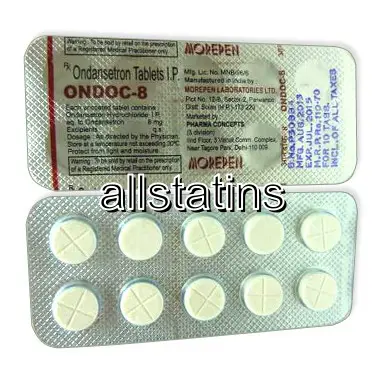| Package | Dosage | Price | Price per Dose | |
|---|---|---|---|---|
| Dosage: 4mg | ||||
| 180 pill | 4mg | NZD545.10 | NZD3.04 | |
| 120 pill | 4mg | NZD371.65 | NZD3.10 | |
| 90 pill | 4mg | NZD294.22 | NZD3.28 | |
| 60 pill | 4mg | NZD213.69 | NZD3.56 | |
| 30 pill | 4mg | NZD120.77 | NZD4.00 | |
| Dosage: 8mg | ||||
| 180 pill | 8mg | NZD690.68 | NZD3.84 | |
| 120 pill | 8mg | NZD476.96 | NZD3.96 | |
| 90 pill | 8mg | NZD380.94 | NZD4.24 | |
| 60 pill | 8mg | NZD278.73 | NZD4.65 | |
| 40 pill | 8mg | NZD198.20 | NZD4.96 | |
| 30 pill | 8mg | NZD154.84 | NZD5.20 | |

Ondansetron Description
Overview of Ondansetron
Ondansetron is a medication commonly used to prevent nausea and vomiting caused by chemotherapy, radiation therapy, or surgery. It belongs to a class of drugs known as serotonin 5-HT3 receptor antagonists. These drugs work by blocking serotonin, a natural substance in the body that can trigger nausea and vomiting signals in the brain and gastrointestinal tract. Ondansetron is available in various forms, including tablets, oral disintegrating tablets, and injectable solutions, making it versatile for different patient needs. It has gained widespread recognition for its effectiveness and relatively mild side effect profile when used appropriately.
Effectiveness in Nausea and Vomiting Management
The primary benefit of Ondansetron lies in its ability to control nausea and vomiting associated with intense medical treatments. Many patients undergoing chemotherapy or radiation therapy experience severe nausea that can significantly impact their quality of life. Ondansetron has been proven to reduce the severity and incidence of these symptoms. Its mechanism of action, centrally acting on the brain's chemoreceptor trigger zone, and peripherally in the gastrointestinal system, makes it highly effective. Patients often find relief within minutes of administration when given intravenously and within hours when taken orally. Its effectiveness allows for better patient comfort and improved compliance with ongoing treatment regimens.
Safety and Side Effects
While Ondansetron is generally well-tolerated, like all medications, it can have side effects. Common mild reactions include headaches, dizziness, and constipation. Some individuals may experience fatigue or a sensation of flushing. Serious side effects are rare but can occur, such as changes in heart rhythm, including QT interval prolongation. This risk is higher in patients with pre-existing heart conditions or when taken in high doses. It is important for healthcare providers to monitor patients closely, especially during intravenous administration. Allergic reactions are uncommon but can manifest as rash, itching, or swelling. Overall, Ondansetron’s safety profile makes it a preferred choice for managing nausea related to serious medical treatments.
Usage and Precautions
Use of Ondansetron should always be guided by a healthcare professional. The dosage depends on factors like the patient’s age, weight, the severity of nausea, and underlying health conditions. It is essential to follow prescribed instructions carefully to minimize risks. Caution is advised in patients with a history of heart problems or those taking other medications that prolong the QT interval. Pregnant or breastfeeding women should consult a doctor before use to assess potential risks. It’s also important to inform your healthcare provider about any other medications or supplements you are taking, to avoid adverse interactions. Regular monitoring and adherence to dosing schedules help maximize benefits and reduce potential side effects.
Conclusion
Ondansetron remains a cornerstone in the management of nausea and vomiting caused by cancer treatments and surgical procedures. Its targeted mechanism and broad availability make it a valuable medication in both hospital and outpatient settings. When used responsibly under medical supervision, Ondansetron provides significant relief for patients, improving comfort and quality of life during challenging medical interventions. Its favorable safety profile and effectiveness continue to uphold its reputation as an essential drug in antiemetic therapy.
